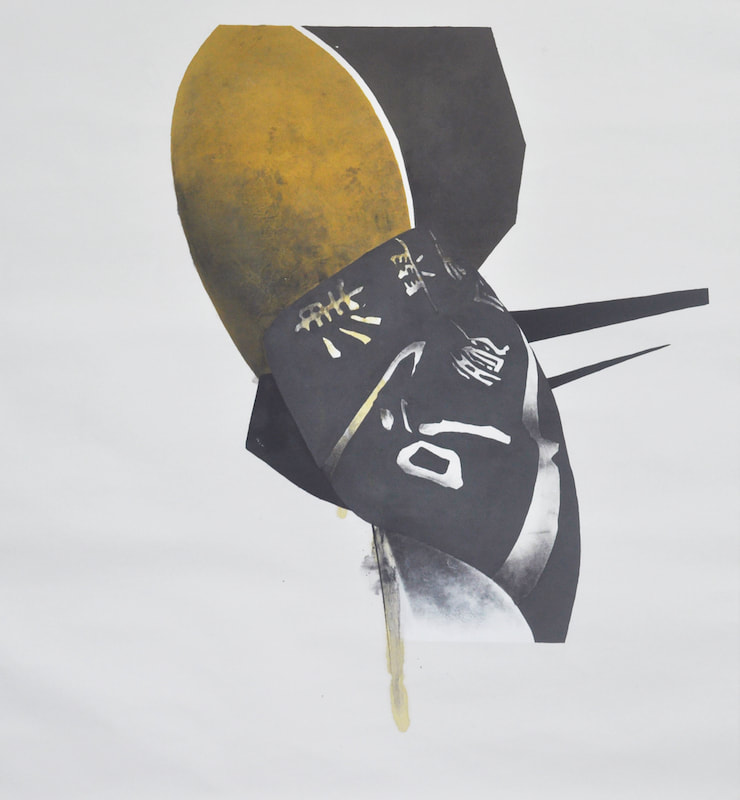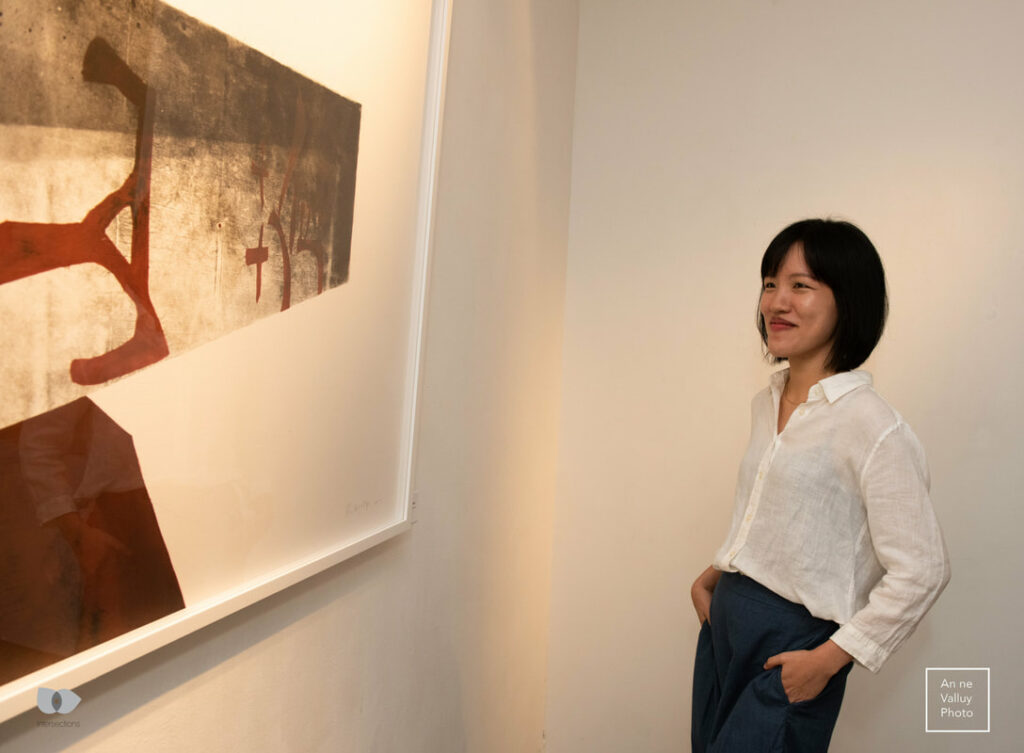In Other Words
June Lee Yu Juan
In Other Words, June Lee Yu Juan’s new series, encompasses seven artworks, which have in common a stunning three dimensional effect that has become her hallmark.
Like in her previous series, Lee Yu Juan adresses the meaning and meaninglessness within language and uses images and text to subvert the status quo of Chinese ink practices. However, this series pushes the boundaries of her practice even further in challenging the viewer by transgressing some of the usual rules of calligraphy.
For instance, the texts, which are of high importance in calligraphy, are put to the side and partially hidden while flat surfaces with non diluted ink disrupt the visual aesthetic of calligraphy.
By folding, twisting and warping texts into volumetric masses she creates solidified assemblages, which suggest the combination of diverse Chinese cultures from the past and the present.
- May 29 -
- June 30, 2019
Rivalry of tradition and modernity - Chinese calligraphy subverted
Heading Hilight
Torn between the duty to learn, respect and honor the sacred culture of her ancestors and the urge to desacralize sanctified conventions of Chinese ink painting and pursue alternative art forms by working new medias, June Lee Yu Juan’s energies have been absorbed in creating her own unique fusion form of art. Archaic and modern Chinese characters and materials; extremely intense dissolution of time and matter; equalization of legacy, memory, significance, and freedom; and a faith in a certain transcendence of profound cultural symbols.
Her way to distance herself from the Chinese cultural heritage was always to invade this past. Distorting traditional elements of the calligraphy in a desire to re-write it, introducing intrusive features that do not belong, inventing new shapes which atomize the original meaning of ancient Chinese narratives have been the various approaches that the artist explored since her first exhibition Ink-finite, which earned her the Fine Arts Award at the Nanyang Academy of Fine Arts of Singapore in 2009.
Corinne Rousset

Sculptural Planes and Geometrical Distorsions
The Chinese calligraphy seal serves as a signature impression affixed to paintings and calligraphic works, and represents an individual’s personal name (名印 mingyin), inclination (闲印 xianyin) or studio name (斋印 zhaiyin).
Lin Chaohong, Vincent
Cultural questioning:
In Other Words questions the standardizations in the grand narratives of Chinese ink painting and calligraphy
Or Rather, Rather Than can be described as a mixed-media landscape-oriented Chinese ink painting of distorted geometrical planes. Or Rather, Rather Than seems to project an insight into the craft-aspect of the Chinese calligraphy seal as a method of inquiry. As if it is lifted from the seal stone, the distorted intaglio-carved texts (白紋 baiwen) forms the primary focus of the art work hinting at the craft-aspect of the Chinese calligraphy seal. If the analysis is to conclude here, it would then be able to simply interpret the art work as an abstracted representation of the seal making process.
However, the miniscule cleft of the bottom-triangular shape evokes the intervention of a vice used during the seal carving process. This particular intervention seems to indicate the time frame where a craftsman would be beginning to craft the intaglio design on the seal stone; and not of the time frame when the seal has been already been completed.
At this juncture and considering the lifting of the distorted text from the seal stone, it can then be suggested that the separation of the text from seal stone generates a question of iconographical relevance in contemporary Chinese ink art. Does the raw seal stone alone constitute as part of the Chinese ink tradition even without its textual accompaniment? If the text is removed from the Chinese calligraphy seal, the seal stone reverts to its commodity status of a raw stone. As such, the cultural status of the stone within the Chinese ink tradition might become problematic.
Lin Chaohong, Vincent
Sharing about art
Ancient Chinese characters adapted from calligraphy and seal scripts are re-appropriated and paradoxically arranged with a desire to write the past as present. Misplaced and incomprehensible, activating viewers to develop new readings. Written and re-written; in search of an answer.
Engaging Art
